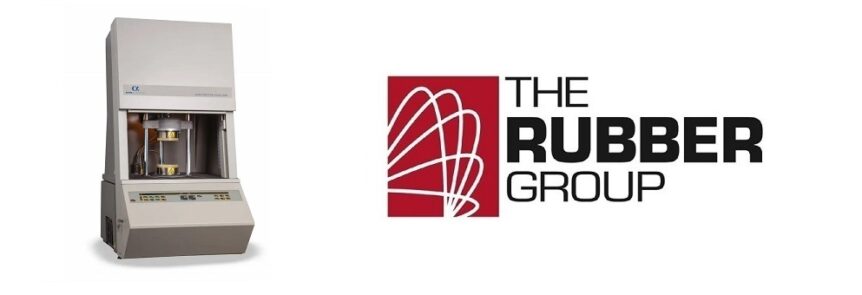Rubber material testing evaluates the properties and characteristics of elastomers, polymers that have both viscosity and elasticity (viscoelasticity). The applications for rubber materials are numerous and range from automotive parts to medical devices to components used by the oil and gas industry. To ensure the quality and reliability of the rubber that engineers can select, testing is critical.
This article from The Rubber Group examines some common types of rubber material testing. Keep reading to learn more, or request a quote if you’re ready to order standard or custom molded rubber products made from materials such as natural rubber, SBR, butyl, EDPM, nitrile, Hydrin®, neoprene, Hypalon, urethane, polysulfide, silicone, fluorosilicones, or fluoroelastomers.
Tensile Testing
Tensile testing determines the tensile strength, elongation, and modulus of elasticity of a rubber material. This information is important in determining an elastomer’s ability to withstand deformation and stress. Tensile testing applies force to a material sample to determine the residual deformation. ASTM D412 contains standard test methods for vulcanized rubber.
Compression Testing
Compression testing is used to determine compressive strength and deformation. This type of rubber material testing is important in determining an elastomer’s ability to withstand pressure and compression. ASTM D575 is a testing specification that determines the compression-deflection characteristics of rubber compounds.
Hardness Testing
Hardness testing measures the resistance of a rubber material to indentation and, in turn, its ability to resist abrasion and wear. There are at least seven scales of rubber hardness, including A and D. Shore A measures the hardness of flexible molded rubbers and Shore D measures the hardness of hard rubbers. ASTM D2240 is a testing specification for measuring the hardness of rubber materials.
Aging Testing
Aging testing is used to determine the performance and durability of rubber materials over time and in response to different environmental conditions, such as heat and light. Rubber aging is a long and continuous process, but accelerated aging tests are performed under laboratory conditions. ASTM D573 contains a standardized procedure for heat aging in an air oven.
Tear Resistance Testing
Tear resistance testing is a method of measuring a rubber material’s ability to withstand tearing forces. This type of testing is important for molded rubber products such as hoses, gaskets, and seals, which may be subjected to tearing forces during regular use. ASTM D470 contains a tongue tear test for rubber products.
Chemical Resistance Testing
Chemical resistance testing is used to determine a rubber material’s chemical compatibility and to evaluate the elastomer’s durability and fatigue life. There are many different standards for rubber material testing for chemicals. For example, ASTM D6284 measures the effect of aqueous solutions with available chlorine and chloramine on rubber properties.
Compression Set Testing
Compression set testing measures a rubber material’s ability to return to its original thickness after the removal of prolonged compressive stresses at a given temperature and deflection. The results of compression set tests are reported as a percentage, and a lower percentage indicates greater resistance to permanent deformation. ASTM D395, Test Method B is commonly used.
Rubber Molding and Rubber Material Testing
Do you have questions about rubber material testing, or do you need help choosing the right rubber compounds for molded products? The Rubber Group uses a moving die rheometer to ensure batch-to-batch consistency so that all of your molded rubber parts have the material and performance properties you expect. Contact us for quality rubber molding.

